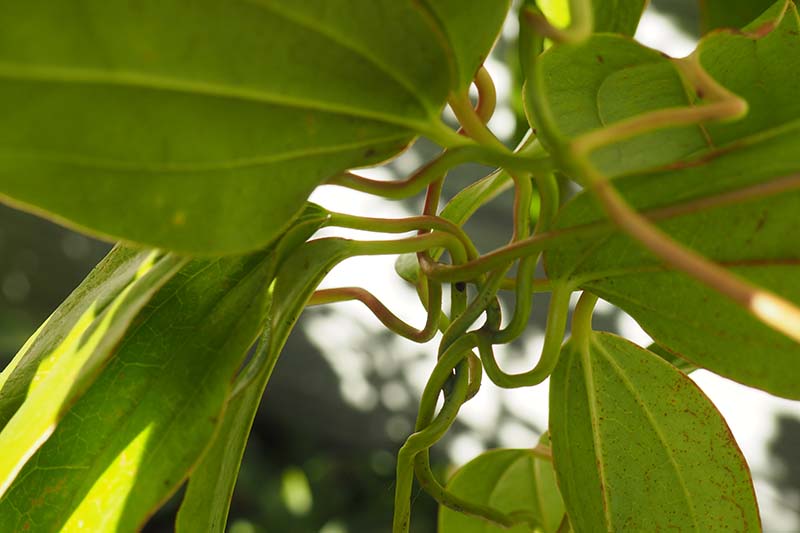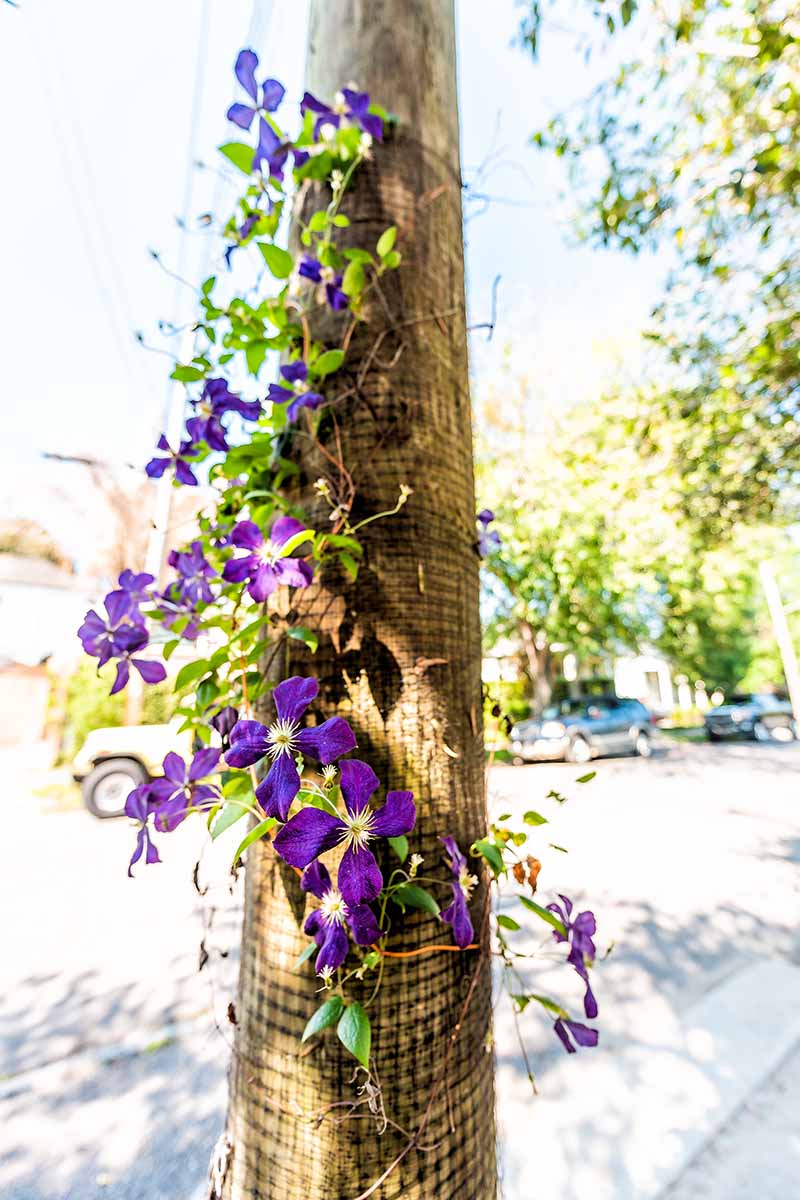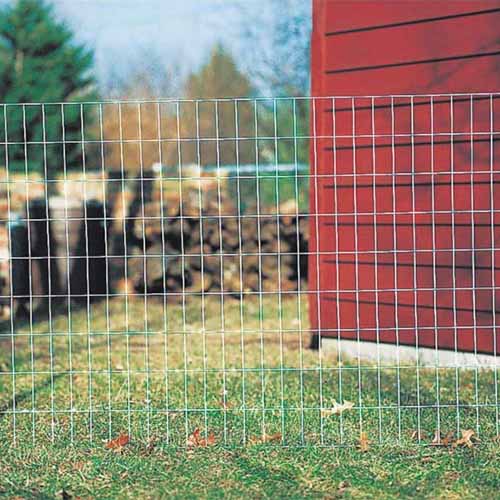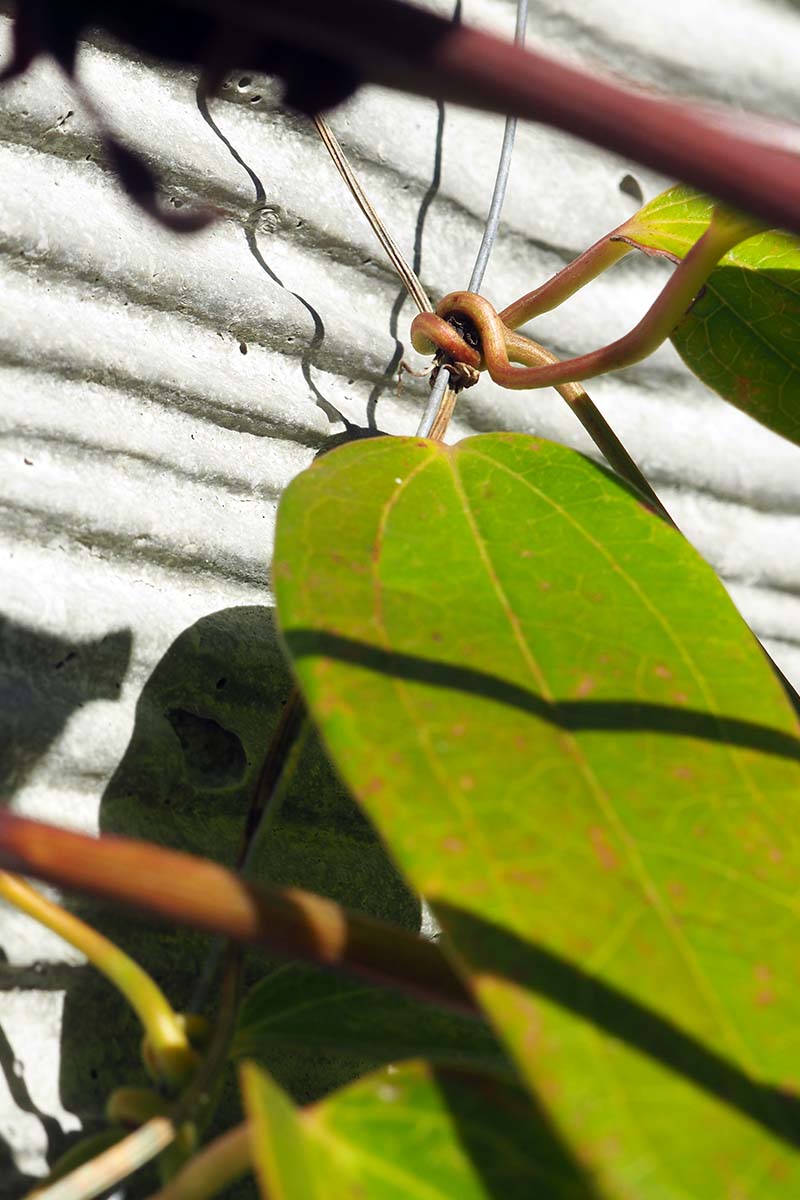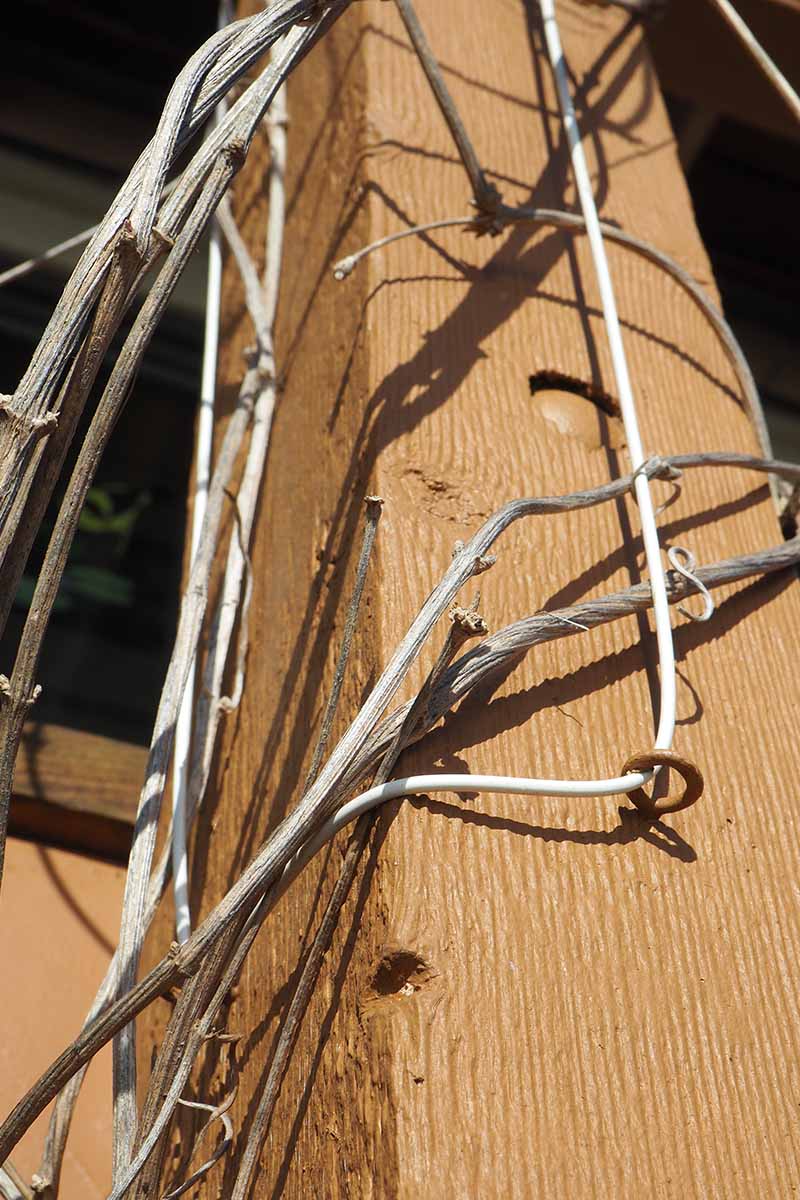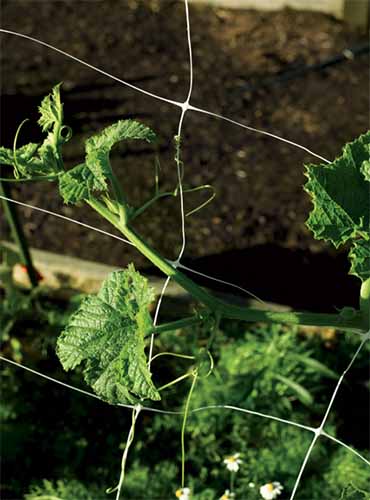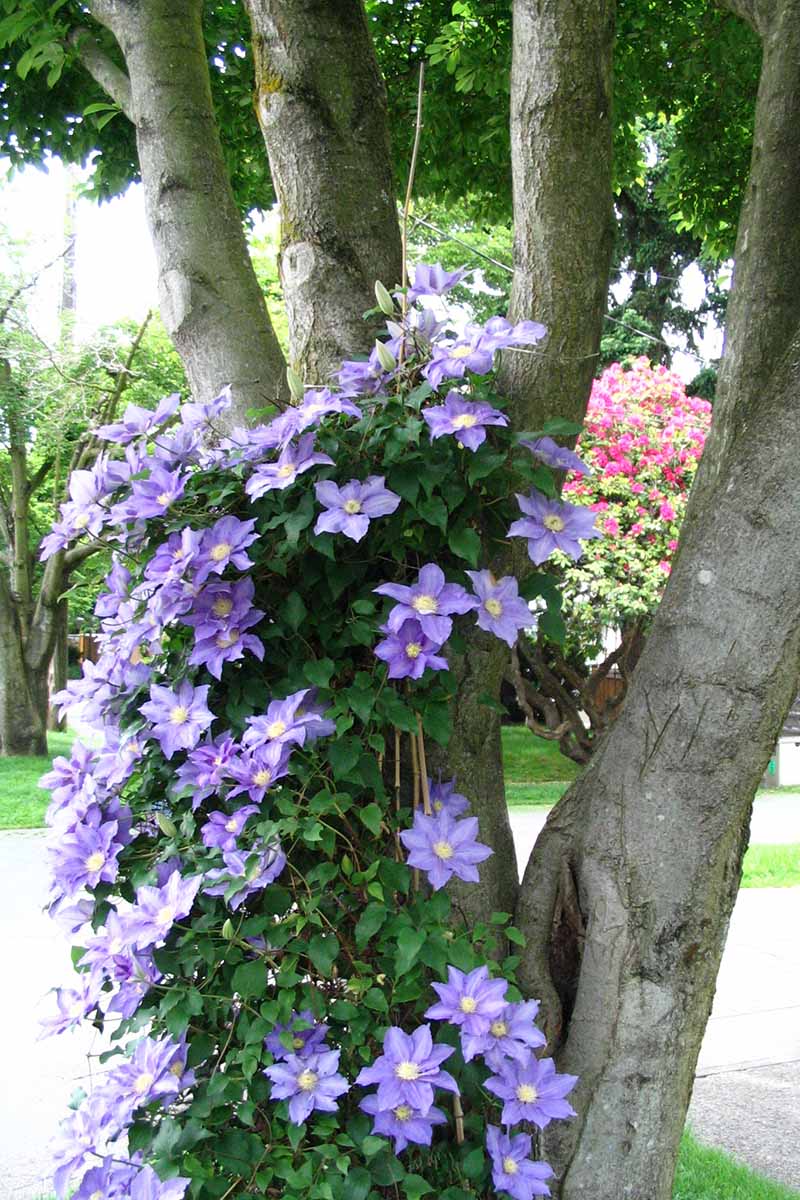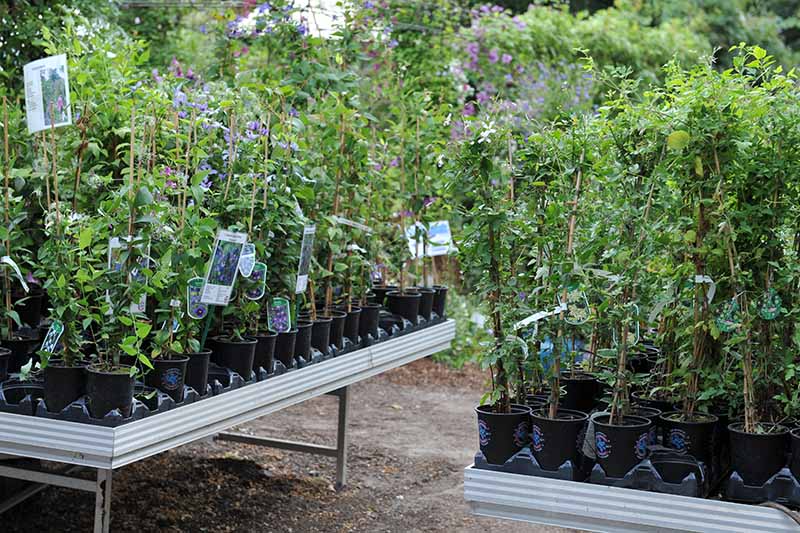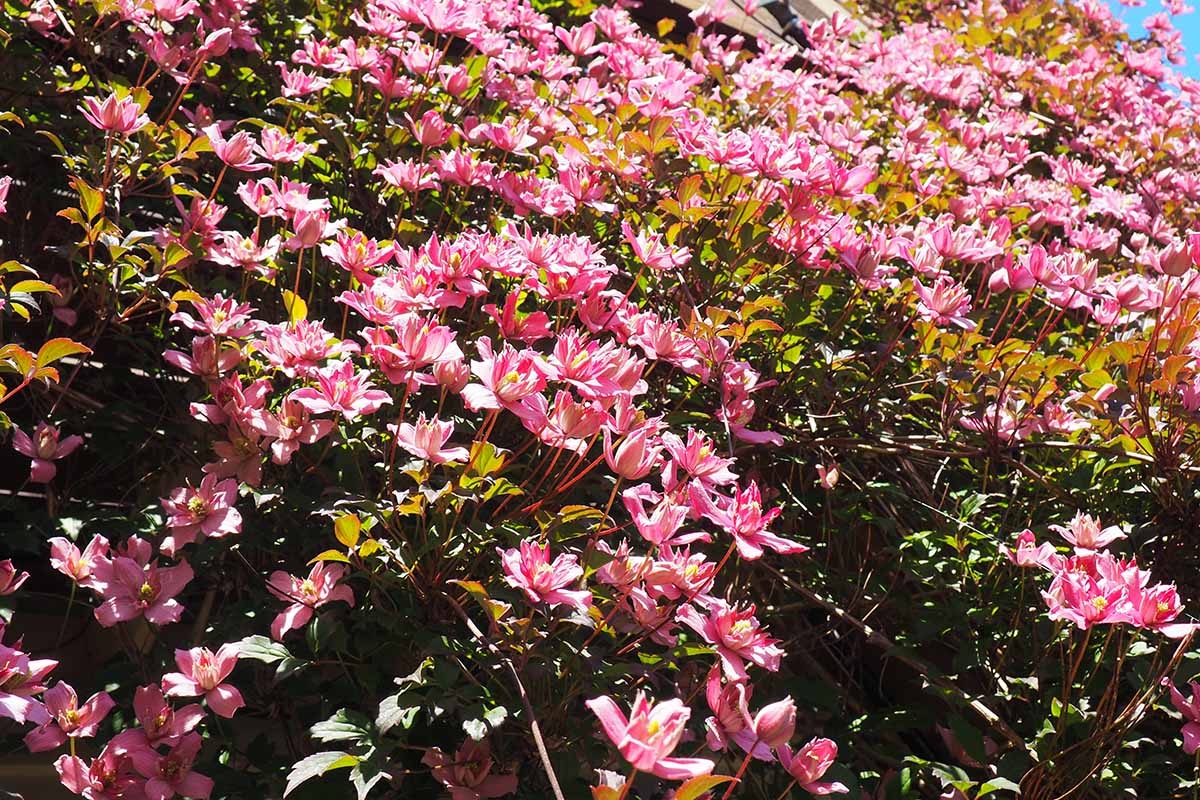Some have a bushy nature, but most are born to climb and love to scale the heights! The most impressive displays are vertical, where their climbing prowess covers almost anything in their path, including arbors, columns, obelisks, pergolas, poles, posts, and trees. However, for vigorous upright growth, an effective trellis system is needed. When the vines no longer have something available to grab onto, they stop growing, and clematis is particular about the type of support it requires. We link to vendors to help you find relevant products. If you buy from one of our links, we may earn a commission. This makes it important to provide proper support for climbing, because the small stems can’t effectively grow on larger structures on their own. But unlike simply sticking a trellis in the ground or attaching one to a wall, mounting these plants on columns or posts can be a bit tricky. The surfaces required, such as metal lampposts, are small and often rounded, and they can be difficult to pierce without power tools. To be effective, the trellis needs to be thin enough for the leaf stems to grab but strong enough to support the vines’ weight. Plus, it should blend in with the foliage during the growing season and not be too unsightly when exposed in winter. What’s needed is a bit of creative rigging. With just a few basic materials, you can craft one – or several – long-lasting trellises for years of fantastic floral displays! So grab your garden journal and take some notes on how to grow clematis up poles, trees, and much more. Here’s everything we’ll cover:
The Twining Habit
Clematis vines are leaf-climbers that grow upright by hooking or wrapping their leaf stems – the petioles – around narrow objects. And where the petiole clasps a support, a transformation happens. Cells change, swelling occurs, and the stem thickens, becoming tough and rigid. This transforms the green, flexible stems into ones of strength and durability, and prevents delicate leaves from getting pulled away as the vines grow. But due to their limited size, the petioles can’t grasp objects larger than one-half to three-quarters of an inch in diameter – which means your support material needs to be under that size. Suitable materials for twining include bamboo stakes, rough tree bark, thin branches, chicken wire, clothesline, fishing line, galvanized wire, invisible netting, landscape fencing, twine, steel rods, and wooden dowels. Once the vines start growing, they can be gently wrapped around the trellis supports or secured in place with plant clips, twine, or garden velcro. As new growth appears, you can tuck it into the existing vines and the leaves will seek out other stems and supports to attach to. When mounting trellis supports, allow an inch or two of leeway between the pole and the trellis. The vines need the space to wrap and twine, and anything wrapped too tightly prevents this movement. These plants grow quickly and require only initial guidance to start twining – once they’ve found their path, they’ll make their own way to the top. Now let’s look at some different types of structures and how to trellis them.
Metal Posts
Hanging trellis materials on metal posts can be challenging because you can’t easily attach anything to its surface, like a screw or staple. One of the best solutions comes in the form of wire garden fencing, which has the strength and stability to support small to large vines. Fencing is thin enough to snip with wire cutters, but it’s also rigid – and it’s malleable, so you can easily roll it into shape to encircle a post. A grid size of two to six inches is ideal for vines to climb through, and a 12- or 14-gauge wire diameter provides the strength needed to be virtually freestanding. Wire fencing comes in a standard height of 48 inches and can also be used to encircle tree trunks with a circumference of up to 42 inches with a two-inch gap and a two-inch edge allowance.
Fishing Line
Thin galvanized wire or heavy fishing line with a 15- to 20-pound test weight can be used to assist climbing vines. Wrap the fencing around the post and overlap at the back as needed, ensuring an easement of about two inches between the post and the fencing. Fold one edge over the other to secure in place or stitch the edges together with twine, velcro, or wire. Vigoro Stretch Ties If needed, secure the cage to the post with stretchy garden tape, like this stretch tie tape from Vigoro that’s available at Home Depot. Welded Wire Fencing Wire fencing can be found at Tractor Supply. Poultry wire should be avoided for this application because it lacks the strength to remain freestanding when laden with mature vines.
Wood Posts
Wooden posts offer the greatest versatility for attaching trellis materials. You might wish to train clematis up your mailbox post, existing fencing, or a pergola. Here are a few tried and true ideas. Insert small screw eye hooks every four feet on two, three, or four sides of the post. Attach a length of fishing line at the bottom and run it through the screw eyes, knotting every 12 to 18 inches to prevent vines from slipping. Tie off the line at the top hook. Fishing line is a good option for plants with a smaller growth habit, but it lacks the rigidity needed to support large, sprawling varieties.
Hooks and Heavy Line
When heavier support is needed, use screw eye hooks placed every four to six feet and run a section of strong polyester cording, nylon-coated galvanized wire, or clothesline through the screw eyes. Hooks and heavy line make a good trellis system for the large, expansive species like C. armandii and C. montana.
Invisible Netting
Invisible netting uses strong polypropylene filaments woven into a grid that gives excellent support to vining plants – and it’s easy to attach! In many cases, the rough bark alone can be enough to provide the texture needed for climbing, or you can add trellis material for more purchase points. A single layer gives ample support for small to medium vines of up to 12 feet. For larger cultivars, add a second layer of netting for extra strength. Monofilament Trellis Netting Monofilament trellis netting is available at Gardener’s Supply.
Trees
The best way to encourage vines to grow up a tree trunk is to choose those with coarse, rough bark such as white ash, sugar maple, black or red oak, or black walnut, as well as many types of conifers. Encircle the trunk loosely with a section of invisible netting, starting about two feet above the ground. Allow two inches of ease between the trunk and netting and secure the cut edges together with stretchy tape or garden velcro. Attach the top of the netting to the trunk with stretchy tape, or if the bark is very thick, a stapler can be used. Use bamboo poles, thin stakes, or a small wire trellis to make a bridge to the netting as needed. When planted to climb a tree, water your vines frequently as the tree will take up most of the available moisture.
Vine Climbing Tips
New plants are usually sold with the vines attached to a small stake for support – leave the stake in place when planting. If possible, choose a planting site on the shady side of your chosen support to keep the roots cool, then train the vines into the sun. For site location, remember the planting adage “feet in the shade, head in the sun” – ideally, the vines will grow into the sun from cool, shaded roots. Create a planting site 12 to 16 inches away from the post or tree to allow room for growth as well as access to the post. Plant the root ball on a slight diagonal angle, leaning the attached stake into the post if there is one, then backfill with humus-rich soil. Top with a two-inch layer of mulch to retain moisture and keep the roots cool. Water regularly during the growing season, providing a minimum of one inch of water per week. For detailed planting and cultivation info, refer to our complete clematis growing guide. The first spring after planting, cut back all vines to 12 to 18 inches, regardless of their pruning group. This hard pruning creates the vigorous branching needed to develop full plants and reduces the chance of chicken-leg clematis – bare lower vines with only top growth. If needed, use bamboo poles, small wire trellises, or thin stakes to bridge any gaps to the trellis. Insert the stakes just outside the root ball and angle them into the pole or tree to meet the trellis. Initially, vines need to be wrapped or attached to their supports with plant clips, garden tape, twine, or velcro – after that, they’ll climb on their own. Throughout the growing season, tuck stray strands of new growth into existing vines and around supports. For a lush, full look, plant two vines on either side of the post or other structure. You can opt for the same or different cultivars, but both should belong to the same pruning group. Our guide to the types of clematis has all the information you need on cultivars and pruning. Locate the roots in the shade, let the vines grow into the sun, and provide trellising or a rough texture for the stems to grasp. Prune for their group, and you’ll enjoy a long season of pretty foliage, gorgeous flowers, and ornate seed heads! What tricks do you folks use to train your vines for climbing skywards? Tell us about it in the comments section below. And for more info on the outstanding flowering vine that is clematis, check out these guides next:
13 of the Best Spring-Flowering Clematis Varieties (Group 1)19 of the Best Summer Flowering Clematis for Your Garden27 of the Best Cold Hardy Clematis Varieties

